
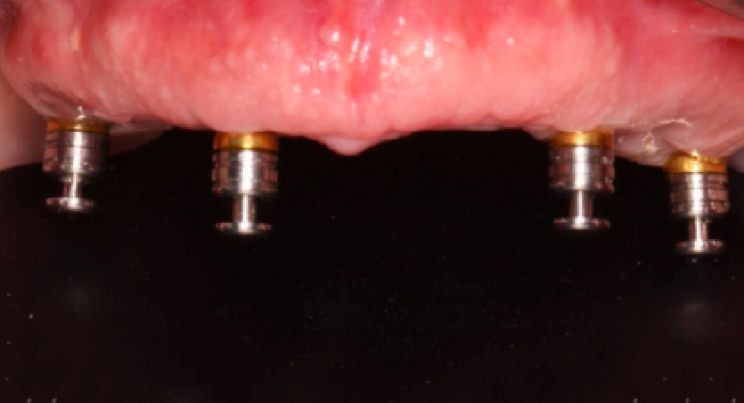
One of the most important advantages of Rhein’83® attachments is their ability to compensate for disparallelisms between implants of up to 30°, which is better than that offered by other similar systems. This is particularly useful in treating edentulous jaws.
Authors: Iglesias I., Manresa C., García-Bellosta S., Subirà C.
This article describes the protocol followed to make a maxillary overdenture in a female patient aged 57 with no teeth, who had four Avinent® Coral internal connection implants (each 4.2 x 10 mm) placed in the upper arch in positions 1.6, 1.2, 2.2 and 2.6. After three months, the implants in the oral cavity were uncovered and four 3-mm-high healing abutments were placed (fig. 1).

Two weeks later, impressions with alginate were taken to make an individual tray. This tray was employed to take the final impression using the closed tray technique (fig. 2).
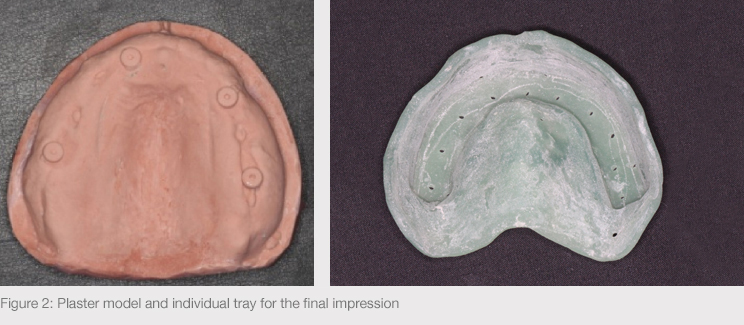
A week later, the final impression was taken with the Rhein’83® attachments placed in the mouth (fig. 3).
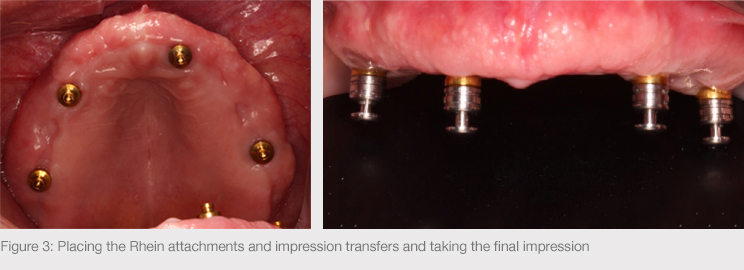
On the master model, a base plate with wax rims was made to determine the patient’s vertical dimension, and the midline and canine line were ascertained (fig. 4).
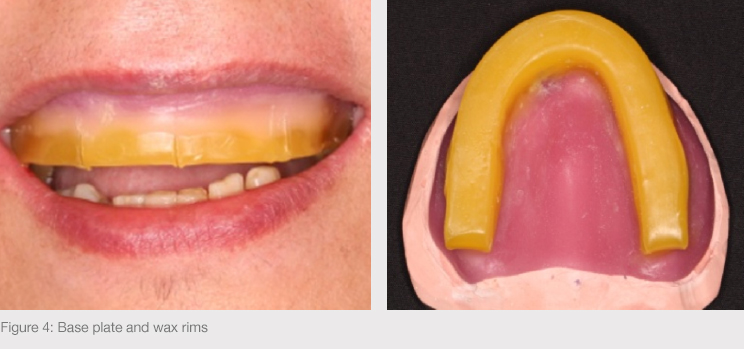
Once the tooth trial had been validated (fig. 5), work then proceeded on the finish of the prosthesis (fig. 6).

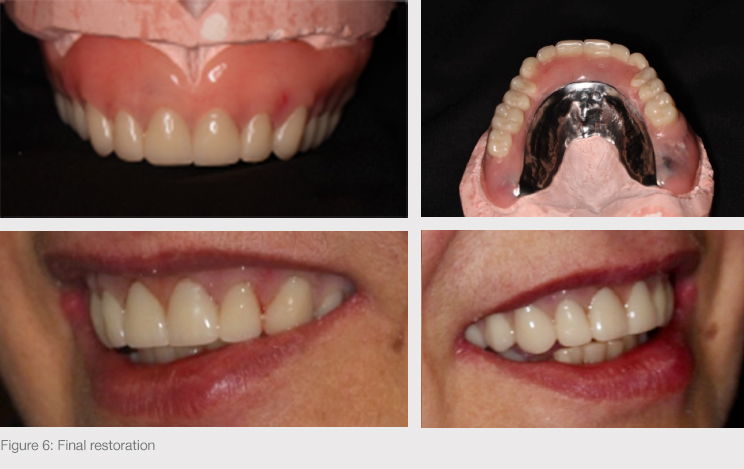
One of the most important advantages of Rhein’83® attachments is their ability to compensate for disparallelisms between implants of up to 30°, which is better than that offered by other similar systems. This is particularly useful in treating edentulous jaws for two reasons: 1) the need for more implants to fix upper overdentures; and 2) the centripetal pattern of resorption typical of the loss of teeth in the upper jaw. From the surgical point of view, these two variables make attempting to maintain the parallelism between implants more difficult.